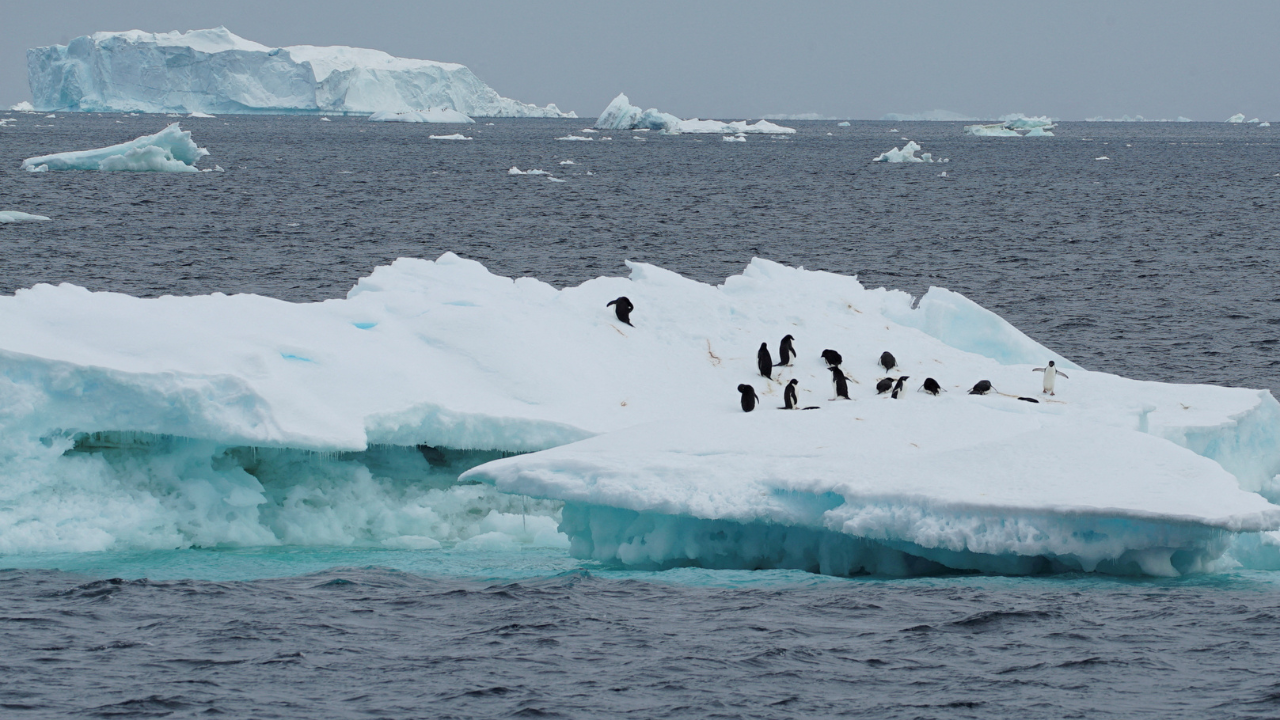As global temperatures continue to rise, the days on Earth are getting longer due to the melting of ice sheets at the poles, new research indicates. This phenomenon is resulting in an increased length of day at “an unprecedented rate,” according to a study published in the Proceedings of the National Academy of Sciences on Monday.
For millennia, the length of Earth’s day has been increasing by a few milliseconds per century, primarily due to the moon’s gravitational pull, which has gradually slowed Earth’s rotation.Additionally, the process of glacial isostatic adjustment – the movement of molten rock in the planet’s mantle towards the polar regions, especially in the Northern Hemisphere – has contributed to this gradual increase, explained Surendra Adhikari, a geophysicist at Nasa‘s Jet Propulsion Laboratory and one of the study’s authors, to ABC News.
However, the melting of ice sheets and glaciers in the Arctic and Antarctica is now significantly impacting the length of day. Researchers found that the redistribution of mass from the poles to the equator, driven by climate change-induced sea-level rise, is causing Earth’s normal oblate shape – resembling a somewhat flattened sphere bulging at the equator – to flatten even more.
Adhikari highlighted that while a sustained increase in the length of day has always been evident, the same amount of increase in milliseconds per century observed over the past 3,000 years is now expected to occur within this century alone, with climate change being the likely cause. “By the end of the 21st century, if in the high-emission scenarios, it could be that the climate impact alone will overtake the impact of the Earth-moon dynamics,” Adhikari said.
The study underscores the planetary-scale impact of modern climate change on Earth. “It gives context as to the gravity, if I may, of the ongoing climate [emergency],” Adhikari told ABC News.
Over the last two decades, the redistribution of mass caused by the melting of the Greenland and Antarctic Ice Sheets has occurred at unprecedented rates. During the 20th century, fluctuations in sea level caused the length of Earth’s day to vary between 0.3 and 1.0 milliseconds per century. However, since 2000, the length of day has increased by a rate of approximately 1.33 milliseconds per century. The study predicts that this rate could reach an additional 2.62 milliseconds per century by the end of the 21st century if greenhouse gas emissions continue unabated.
In the future, modern society may need to rely on quantum or atomic clocks for accurate timekeeping and precision navigation. “That enables us to do more precise navigation from Earth and space,” Adhikari added.
For millennia, the length of Earth’s day has been increasing by a few milliseconds per century, primarily due to the moon’s gravitational pull, which has gradually slowed Earth’s rotation.Additionally, the process of glacial isostatic adjustment – the movement of molten rock in the planet’s mantle towards the polar regions, especially in the Northern Hemisphere – has contributed to this gradual increase, explained Surendra Adhikari, a geophysicist at Nasa‘s Jet Propulsion Laboratory and one of the study’s authors, to ABC News.
However, the melting of ice sheets and glaciers in the Arctic and Antarctica is now significantly impacting the length of day. Researchers found that the redistribution of mass from the poles to the equator, driven by climate change-induced sea-level rise, is causing Earth’s normal oblate shape – resembling a somewhat flattened sphere bulging at the equator – to flatten even more.
Adhikari highlighted that while a sustained increase in the length of day has always been evident, the same amount of increase in milliseconds per century observed over the past 3,000 years is now expected to occur within this century alone, with climate change being the likely cause. “By the end of the 21st century, if in the high-emission scenarios, it could be that the climate impact alone will overtake the impact of the Earth-moon dynamics,” Adhikari said.
The study underscores the planetary-scale impact of modern climate change on Earth. “It gives context as to the gravity, if I may, of the ongoing climate [emergency],” Adhikari told ABC News.
Over the last two decades, the redistribution of mass caused by the melting of the Greenland and Antarctic Ice Sheets has occurred at unprecedented rates. During the 20th century, fluctuations in sea level caused the length of Earth’s day to vary between 0.3 and 1.0 milliseconds per century. However, since 2000, the length of day has increased by a rate of approximately 1.33 milliseconds per century. The study predicts that this rate could reach an additional 2.62 milliseconds per century by the end of the 21st century if greenhouse gas emissions continue unabated.
In the future, modern society may need to rely on quantum or atomic clocks for accurate timekeeping and precision navigation. “That enables us to do more precise navigation from Earth and space,” Adhikari added.
Denial of responsibility! Swift Telecast is an automatic aggregator of the all world’s media. In each content, the hyperlink to the primary source is specified. All trademarks belong to their rightful owners, all materials to their authors. If you are the owner of the content and do not want us to publish your materials, please contact us by email – swifttelecast.com. The content will be deleted within 24 hours.


